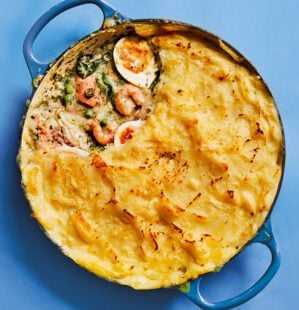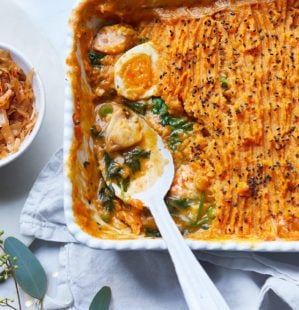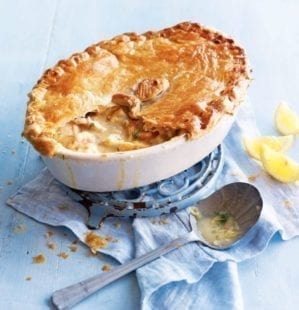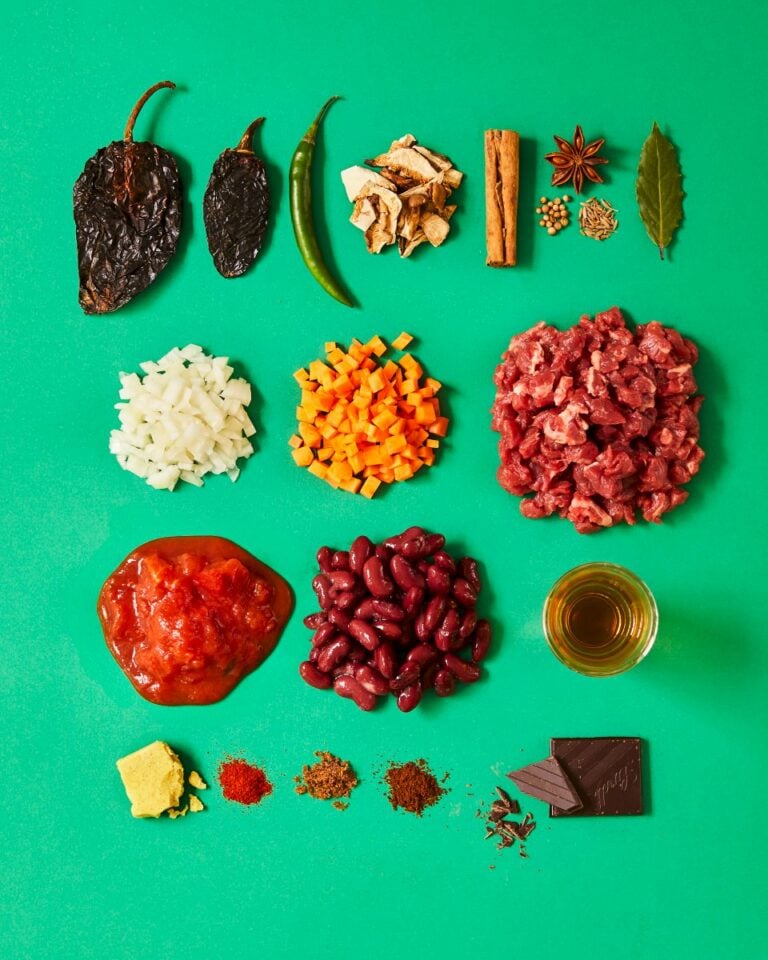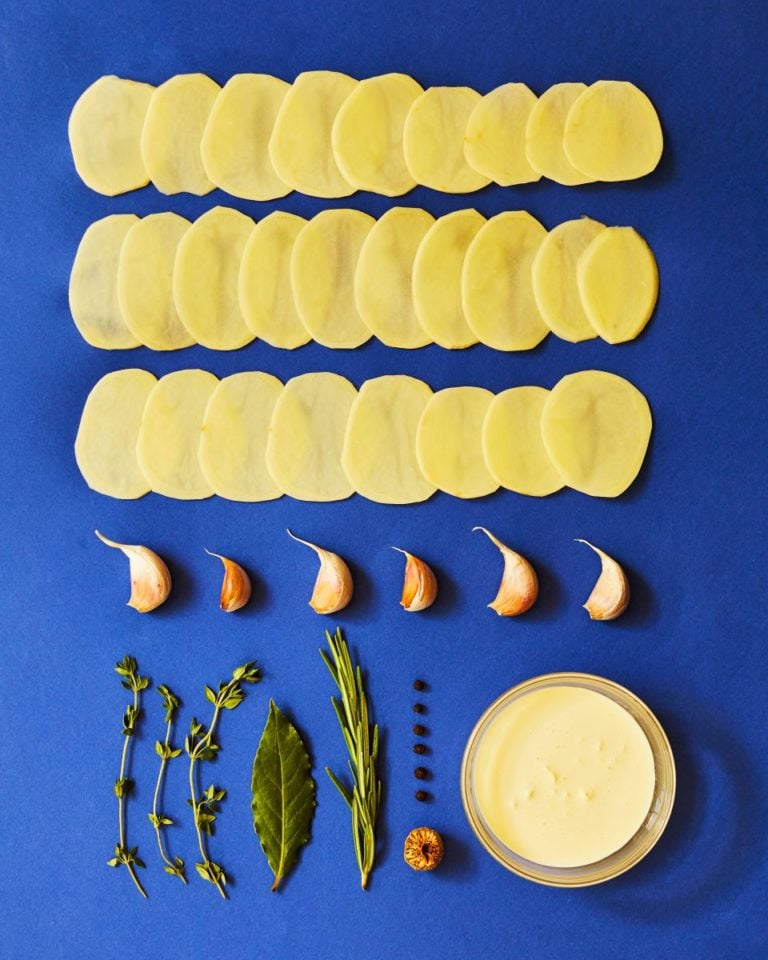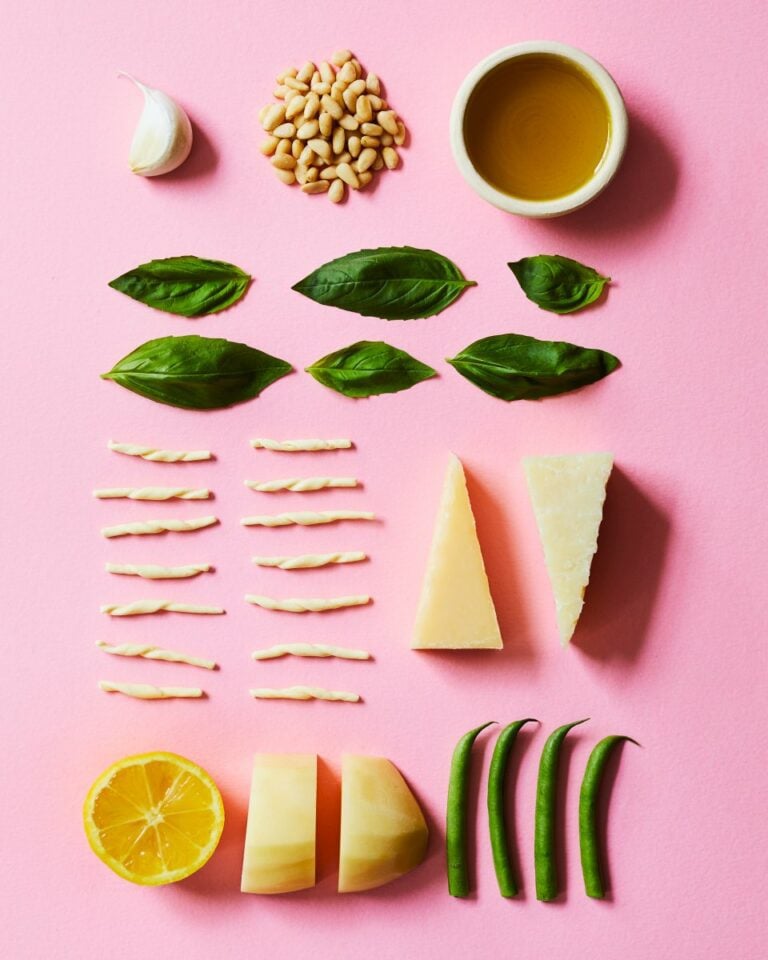Best of the best: how to make the ultimate fish pie
No shortcuts. No cheat ingredients. Our best of the best series takes the view that if something’s worth doing, it’s worth doing right. We take a deep-dive into a classic dish, delving into the processes and analysing why it tastes so good, then we give you our ultimate recipe. This time: Pollyanna Coupland takes the classic fish pie to new heights. If you’re a fan of this comfort food favourite, this luxury fish pie recipe will knock your socks off…
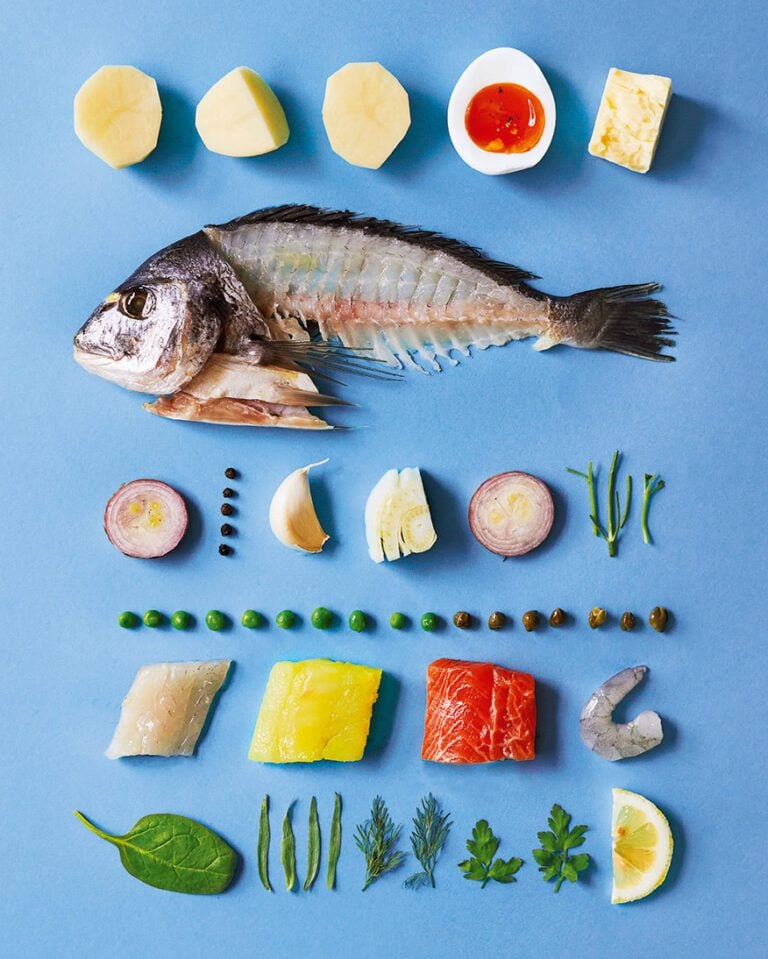
A spectacular fish pie is a Christmas Eve tradition for many, but in my house it’s almost a monthly treat – not only for an ultimate bowl of comfort, but also for some therapeutic time in the kitchen. Honing cookery skills is pure pleasure for me and this pie has it all: filleting fish, making stock and a silky sauce, and perfecting the smoothest mash. Let me show you how (and why) I make my fish pie the way I do – it really is the best of the best.
The sauce
The secret to any good fish pie is the sauce – and the secret to the sauce is the base. A lot of recipes tell you to poach the fish in milk, then use the infused dairy as the sauce base, but I prefer to make a stock from water (plus wine and pastis) using the fish head, bones and skin. The reasons for this are:
- This gills-to-tail approach eliminates waste and teaches new skills. Filleting a fish is a satisfying job, though you can ask your fishmonger to do it for you if you don’t fancy it (just ask to keep the bones).
- As the fish gets cooked once it’s in the pie, it doesn’t need to be poached in milk beforehand and risk becoming overcooked.
- Using stock not milk makes my pie lighter, plus dairy fats tend to dampen flavours. Stock ensures a flavour first pie.
The fish
What I love about fish pie is its versatility – you can add whatever combination of sustainable fish and shellfish you like. I’ve gone for a white fish, an oily fish (salmon is most used in fish pie mixes but trout is more sustainable), a good quality smoked haddock for flavour and prawns for texture.
I usually choose a whole sea bass or sea bream to get the bones for my stock, but any white or flat fish will work well (oily fish don’t work as the bones and skin make greasy stock – buy fillets instead and add them in pieces to the filling). Definitely use the fish head as it contains lots of natural gelatine which gives the stock body. And rinse the bones under cold water to remove any blood, as this will impart bitterness.
"What I love about fish pie is its versatility – you can add whatever combination of sustainable fish and shellfish you like"
Filleting the fish
If you haven’t done it before, don’t be intimidated by filleting the fish – the fillet gets chopped up into bite-size pieces anyway, so you don’t need it to be perfect. For this reason, fish pie is a fantastic dish for practising your filleting skills. With a good sharp knife (a filleting knife is best), cut away from you from behind the head, as close to the spine and ribs as you can, to release the fillet. Next, carefully cut off the skin. Any flesh left on the carcass/skin will help flavour the stock, so don’t worry too much about wastage.
Building flavour
Fish and anise flavours are a classic combo so I’ve packed the stock with fennel seeds, fennel, dill, tarragon and Pernod. Fish stock needs only a half hour simmer, so while my pie is a bit more involved than a regular one, it’s still doable in 1½ hours. We’re after a lightly perfumed stock, so don’t be tempted to brown the vegetables before adding the liquid, and slice them finely for maximum surface area. Finally, skim off any scum that rises to the surface after you add the fish bones and trimmings but before you add stock ingredients that’ll float (such as herb stalks and the peel or trim from the veg).
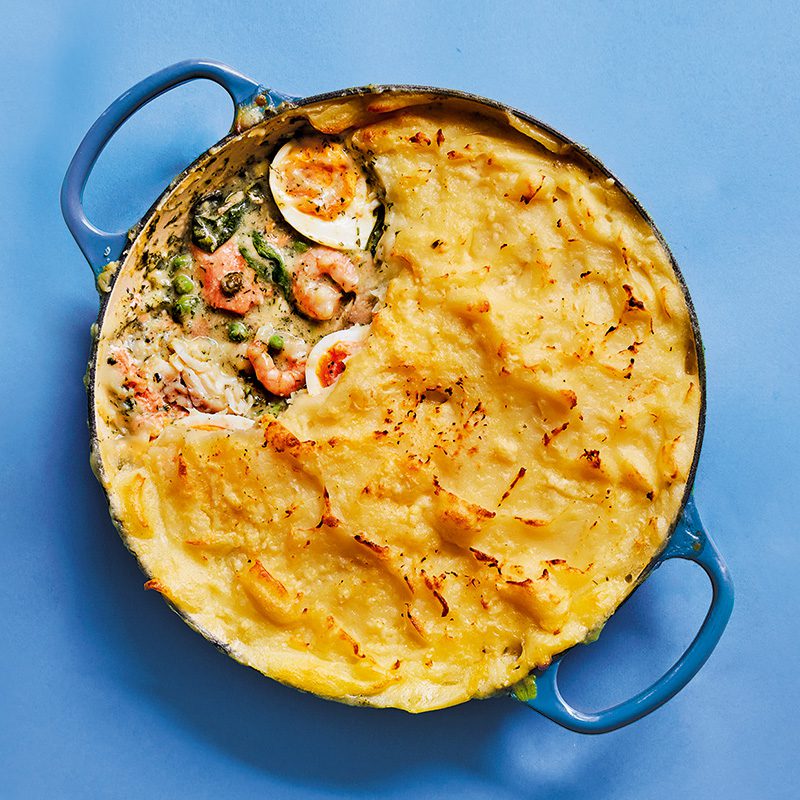
Brightening the filling
With that rich mash on top, fish pie is an indulgent dish, so I like to add fresh green flavours to the filling. Peas and spinach add texture, and I use plenty of herbs: parsley for tradition, dill and tarragon for that fish-and-aniseed pairing.
Hard-boiled eggs are a tradition I’m on board with as they give the pie a bit of structure and bulk. Lemon zest lifts the flavour and, as we’ve used stock instead of milk, there’s no danger of the lemon making the sauce split. Finally, a scattering of zingy, salty capers punctuates the mixture perfectly.
The topping
You’ve spent all this time and effort creating a fantastic filling so don’t let the side down with lumpy mash. Boil the potatoes until perfectly tender (over-done waterlogged potatoes will give watery mash). Drain, let them steam-dry a little, then push through a potato ricer (or a fine sieve, although this will take longer) into a large bowl. You must do this while the potatoes are still hot or they’ll create a gluey, heavy mash. Then it’s just a case of incorporating lots of butter and a little milk to enrich the potato into something silky and decadent.
The combination of seafood and cheese is often controversial but there are so many fantastic pairings: think tuna melt, lobster thermidor, salmon and cream cheese and – for me at least – fish pie! As well as flavouring the potato with a wonderful tang (a strong mature cheddar is key), it contributes towards a brilliantly crisp crust, so I always include it.
Make sure you fluff up the mash topping with a fork before the pie goes in the oven to create craggy ridges for extra crunch.
Now you’re ready to make the best of the best fish pie recipe.
Subscribe to our magazine
Food stories, skills and tested recipes, straight to your door... Enjoy 5 issues for just £5 with our special introductory offer.
Subscribe
Unleash your inner chef
Looking for inspiration? Receive the latest recipes with our newsletter
